Care for a walk — a 3,000-kilometre walk along the River Ganga?
Siddharth Agarwal set out to walk along the course of the Ganga — from places where she is a muddy stream to others where she roars. The documentary ‘Moving Upstream: Ganga’, directed by Shridhar Sudhir, captures the various facets of the living, breathing river and the people who live by it.
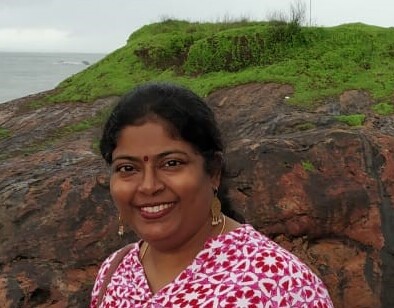
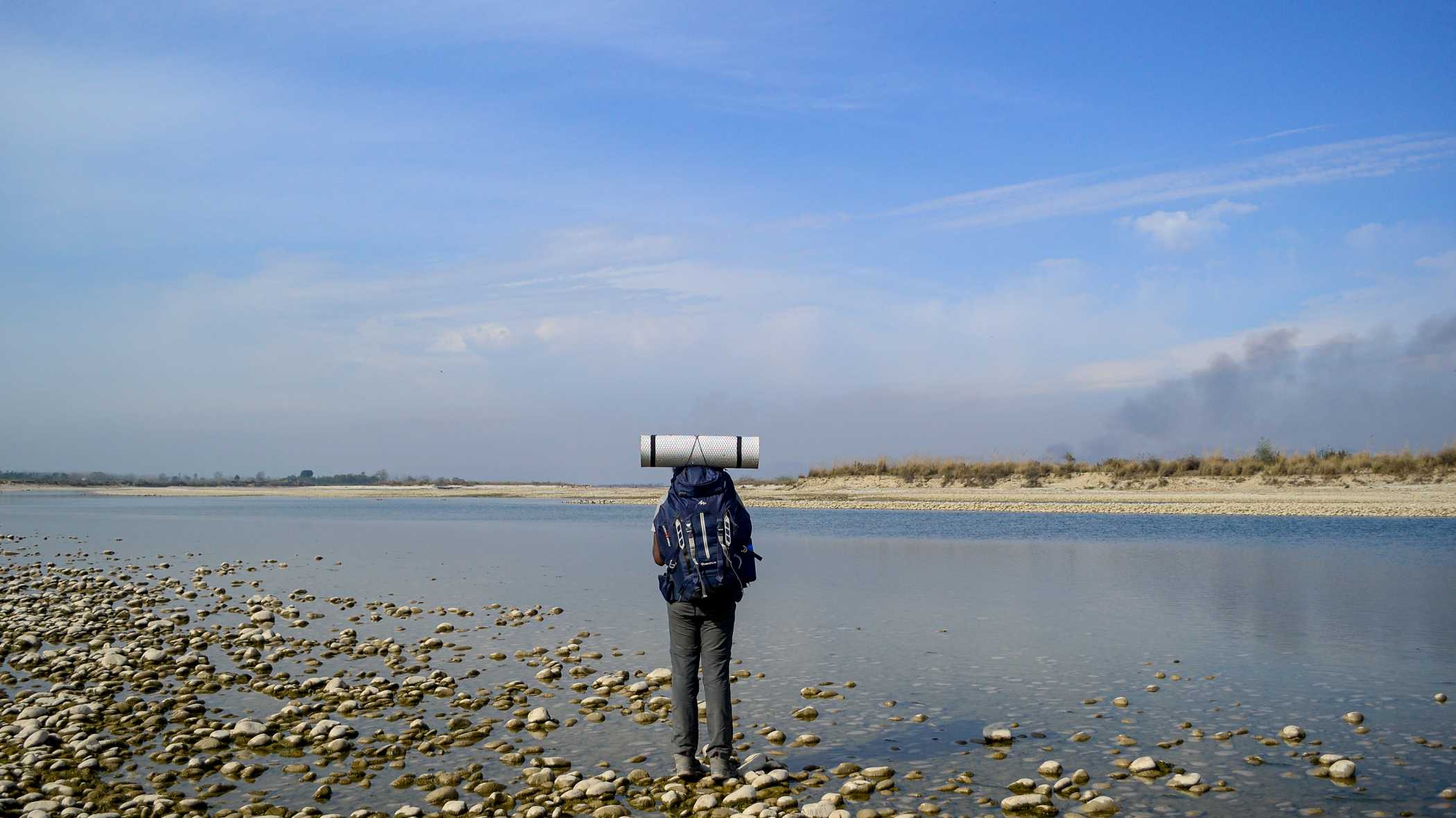
By the Ganga when it enters the floodplains downstream of Haridwar. Photo: Shridhar Sudhir
Quite like the river it tries to capture in all its hues, the documentary Moving Upstream: Ganga straddles myriad worlds. It fuses ecology, riverine communities, religion, spirituality, faith, the aftermath of development, displacement and more into a 105-minute film that allows every voice the space it needs.
When Siddharth Agarwal of Kolkata, an aerospace engineer from IIT, Kharagpur, began his 3,000-kilometre walk from Ganga Sagar in West Bengal to Gangotri, the source of the Ganga, he might not have expected to see and hear the things he did. The walk was also a learning for him, he says in the documentary.
For those from urban India, rural India can mean either of two things — an object of deep romanticisation or one that tempts them to don the activist’s hat. Agarwal, mercifully, does neither. He walks, and then some more, smiling and greeting people, striking conversations that sometimes yield glowing pearls of wisdom, and at others simple facts stated without much fuss. Through it all, with him, we also learn.
We learn of the Farakka Barrage in West Bengal’s Murshidabad district and how it has affected life for those along the Ganga, about mosquito fishing nets that spare no small fish, and of fish that have disappeared — hilsa, charkhi, jhinna, etc — once rivers were dammed.
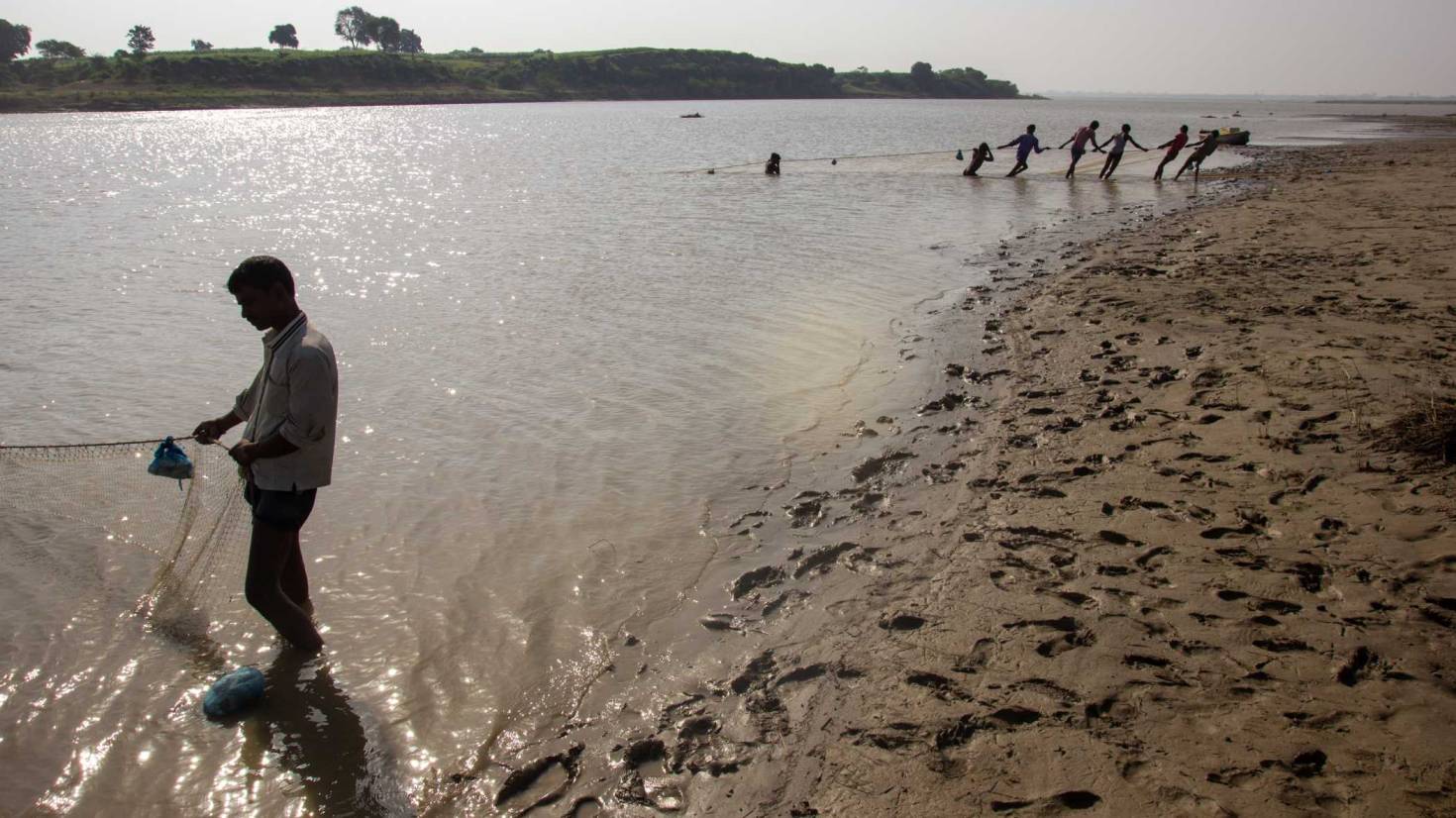
There’s talk of the Gangetic dolphin that is losing its habitat because of dredging — it uses echolocation to move about and dredging has affected it.
The documentary, directed by Shridhar Sudhir — who walked along with Agarwal for the last 500 kilometres shooting as they walked — follows the time-tested principle of ‘show, don’t tell’, very effectively. You can write an essay on river erosion and the salty tears that flow within after this film.
The effects of displacement
Erosion and displacement are terms that are, at times, loosely bandied about. And, every time a river floods, the urban half of India rushes to send aid. But, what does it feel to wait in dread and quiet acceptance when the river, which is some kilometres away, suddenly is some metres away? Where you’ve seen your neighbouring village disappear and stoically await your turn.
The quiet acceptance of it all is what is most disconcerting, but you also realise that these people are one with Nature and have grown up hearing stories about the river and seeing it change course, slowly, surely.
Displacement due to dam projects and villagers being overrun by water are things we read and rage about. “For me they are not villages. They are places where my friends and family lived. As close as they once were, with this displacement, they are very far now. Life has changed,” says a mountain dweller in Uttarakhand.
Another points to a tree in the middle of a river. “That used to be my house,” he says, simply. “And, the river will take the place we are standing on now, in two-three years.”
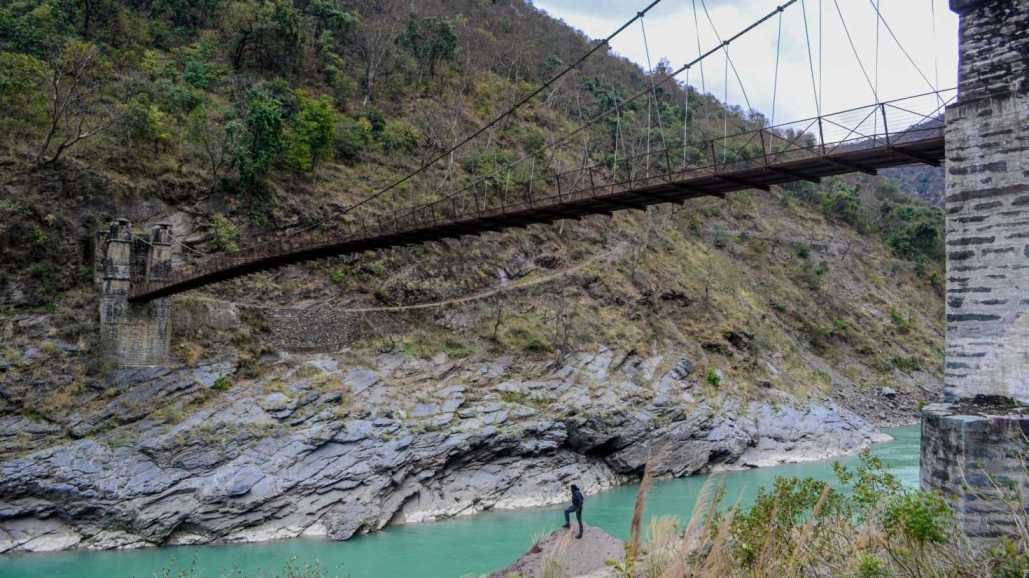
Life by a highway in the making
Elsewhere, the Chardham highway project is on, and labourers from Nepal are hard at work. Agarwal stops by to speak to the local people. Do they have safe accommodation? No one really knows.
And amid all their poverty and deprivation, in the evening, when they take a break from work and boil some water to tackle the cold, a saucer of boiling water is laid out for the mongrel pup that lives with the workers. It is one of them too.
A senior citizen in ochre walks on the road, covering 30 kilometres some days, 60 at others. He seeks to meet the goddess Ganga before his lifetime. The villagers respect anyone who walks to meet the Ganga at source. They believe such pilgrims do good for the world.
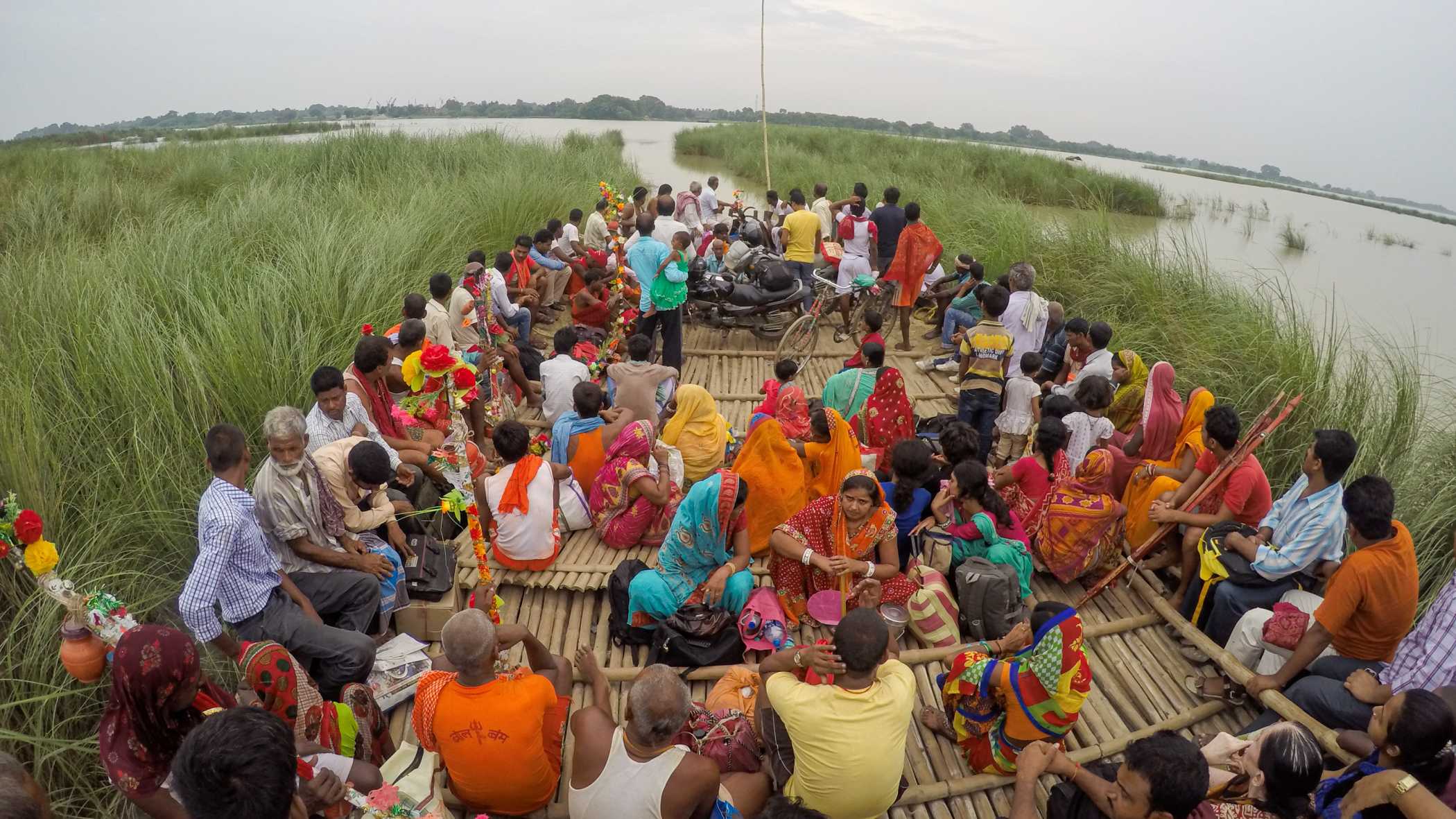
From places where the Ganga is but a muddy stream to places where she extends kilometres in breadth, the river is a living, breathing creature, changing with every passing day.
A villager in the hills speaks of the jungle opposite the hill he lives on, and how it has been without human interference and thrived over two centuries, with rich wildlife. “Once a bridge is built, humans, the most dangerous species, will go there. Trees will be cut. It will take two hundred years to restore the balance,” he said.

The documentary tries to capture the Ganga’s various perspectives, and succeeds in that attempt. The Ganga means different things to different people, and Moving Upstream, a film by Veditum India Foundation, only reiterates that. The Foundation’s work is centered on Indian rivers, and life in and around these rivers.
Excerpts from a conversation with producer Siddharth Agarwal and director Shridhar Sudhir:
Siddharth, how transformational, personally, was this walk?
I walked all through Bengal into Jharkhand, Bihar, Uttar Pradesh and Uttarakhand from June 6, 2016 to April 3, 2017, with a break in between to recover from an injury.

Along the journey, I realised that a river is not merely water, it is the things it holds within, the culture and the people… they make a river.
Personally, the unlearning began with what I thought of the idea of walking. It changed from when I began. Earlier, it was important to cover a certain number of kilometres, then it became about conversations.
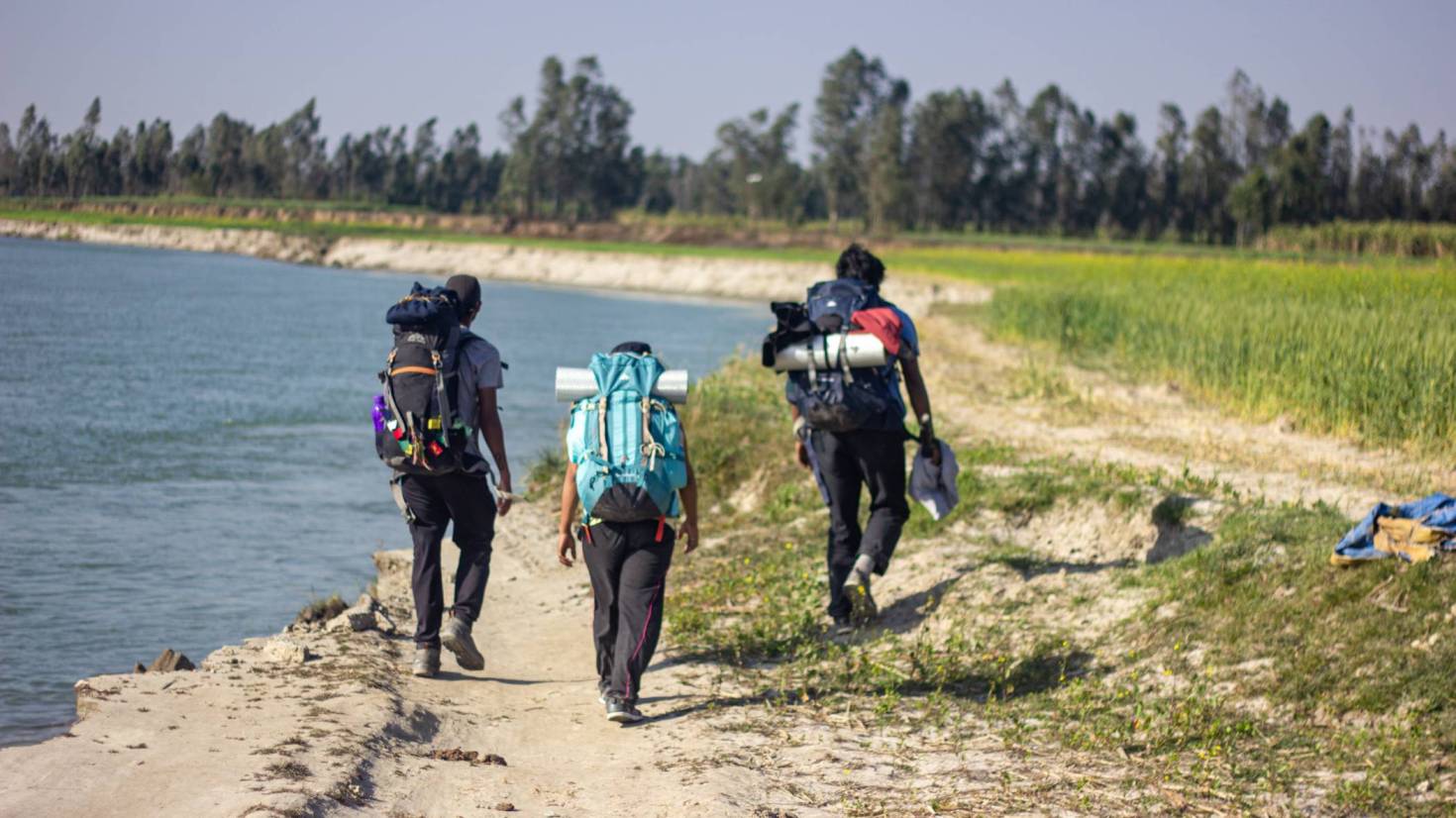
There was the pace of enquiry, the theraav, I became more patient.
This trip has made me unsure about a lot of things, by placing me in a position where I don’t know enough.
That humility is endearing.
Shridhar, how did you structure a film that’s part-experiential and part a documentation of people’s lives?
When I came into the project in 2017, I realised this was an unusual walk. We had practical limitations, and had varied footage shot across four pieces of equipment.
The first month, a car followed Siddharth and that was a very different kind of filmmaking. Then he began walking and the documentation was not great because he was not trying to make a film. Ultimately, the film is structured from 3,882 video clips.

We could have different kinds of films from the content we had. But we let it flow, quite like the river. It meaders and Siddharth’s narrative is the thread holding them all together.
His questions also changed as we moved upstream. There was greater understanding.
We wanted the film to be a source for people to understand the river better and how we interact with it.
The film features faith, ecology, environment, people, the rivers, marine life and the shocks of development. How did you strike a balance among the various strands?
It was a huge balancing act, it helped that I was editing the film too, so we had creative control. We had to leave out a lot of voices to accommodate the film in 105 minutes.

